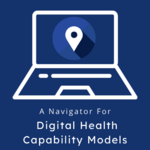Navigator for Digital Health Capability Models
The Navigator for Digital Health Capability Models (also called the 'Navigator') enables health planners, implementers, evaluators, and funders to (i) identify and use the most appropriate health information system digital readiness assessment indicators from across six related tools and (ii) leverage past maturity model-based assessments for improving digital health capabilities at the national and sub-national levels.
The Navigator comprises two main components (links to these components will be available soon):
- A guidance document that explains what the Navigator materials are and why they are needed, discusses how and when to use the materials, and identifies who should use them. The materials include a detailed PDF document and an Excel-based decision-support workbook.
- The Excel-based decision support workbook can be used to (i) identify and use the most appropriate maturity model-based tool(s) and (ii) leverage past maturity model-based assessments.
- A slide deck that provides an abbreviated overview of the Navigator and serves as an introductory tutorial.
The Navigator includes six maturity model-based tools:
- Early-Stage Digital Health Investment Tool (EDIT)
- Global Digital Health Index (GDHI)
- Health Information System Stages of Continuous Improvement (SOCI)
- Health Information Systems Interoperability Maturity Toolkit (IMM)
- Information Systems for Health Toolkit (IS4H)
- Survey, Count, Optimize, Review, Enable (SCORE)
The Navigator was developed in collaboration with the Digital Health and Interoperability Working Group of the Health Data Collaborative under the guidance of an advisory team comprised of members from the United States Agency for International Development (USAID), the World Health Organization, UNICEF, World Bank, the Country Health Information Systems and Data Use (CHISU) project, and Kati Collective, Inc. The Navigator project was funded by the Digital Square project of USAID and led by the Carolina Population Center of the University of North Carolina at Chapel Hill, North Carolina, USA.

